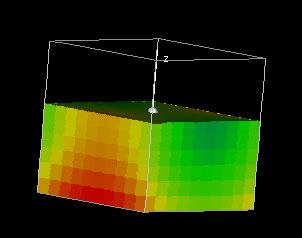
[D]
In order to understand how integration works in 3-space, consider the problem of finding the total mass of some region.
If we know density as a function f of x, y, and z, then we can approximate the mass of a tiny box of volume dV located at (x0, y0, z0) as the product f(x0, y0, z0)dV. We can then find the total mass by adding up these the masses of these tiny volumes.
If all three dimensions of the volumes approach 0, the summation
becomes a triple integral.
Exercises
|
|
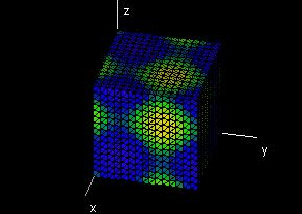
Exercises
|
|
As was true with simple
regions, in order to find the total mass of a region between two
function graphs, we must integrate the density function times some tiny
volume dV over the given region. The difference here is in
the limits of integration.
x and y will still begin and end at constants. The
lower and upper limits of z, however, will be functions of x
and y.
Exercises
|
|

Exercises
|
|
Integration in a non-Cartesian coordinate system requires an
application of the Change of Variables Theorem. 
∫∫∫Df(x, y, z)dxdydz = ∫∫∫D*f(x(u, v, w), y(u, v, w), z(u, v, w))(xu[yvzw - ywzv] + yu[zvxw - zwxv] + zu[xvyw - xwyv])dudvdw,
Where D is the domain in Cartesian coordinates and D* is the domain in the new coordinate system.
Exercises
|
∫∫∫Df(x, y, z)dxdydz = ∫∫∫D*f(x(u, v, w), y(u, v, w), z(u, v, w))(xu[yvzw - ywzv] + yu[zvxw - zwxv] + zu[xvyw - xwyv])dudvdw) for each of the following coordinate systems:
|

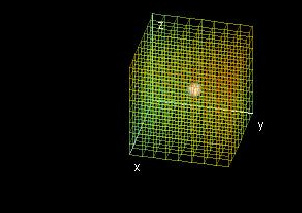
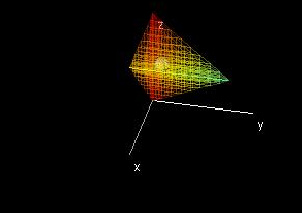
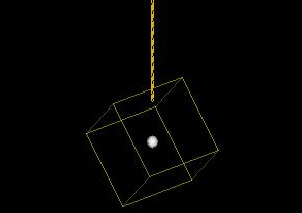
Exercises
|
|
The moment of inertia I of an object about an axis of rotation is a value which indicates the resistance of that object to changes in rotation about that axis. For a three-dimensional region D with density ρ(x, y), this calculated using the following formula:
I = ∫(r(x, y, z))2ρ(x, y, z)dxdydz
Where r(x, y, z) is the distance of the point (x, y, z) from the axis of rotation.
Exercises
|
|